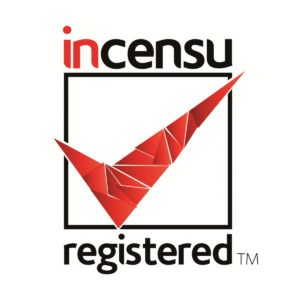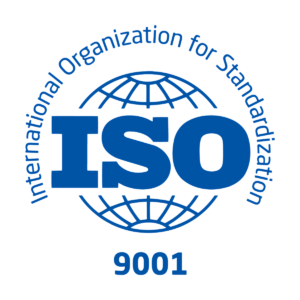Managing Short-Term & Long-Term Absence in the Workplace

It is imperative for employers to adopt a balanced approach towards attendance management. Employees are the lifeblood of any company. Therefore, when employees are absent from work for long periods of time, it has an impact on its business.
According to the Health and Well-Being at Work survey by CIPD, there are several causes, including sickness, that can affect the regularity of an employee at work. Authorised leaves are taken by employees for a variety of reasons including short-term and long-term sickness. Usually, sickness leaves are taken for minor illnesses colds/flu, stomach upsets, headaches, or if the employees are experiencing stress, anxiety, depression, musculoskeletal injuries, back pain and so on. Employers who value their employees must take steps to turn the workplace into spaces that foster employee good health and well-being. Positive workplaces are, undoubtedly, more productive.
However, there are also such employees who take frequent, unauthorised leaves, taking advantage of the company’s sick pay schemes. It is imperative for employers to identify and take necessary action against those who do so. Although most employers do not monitor it, frequent and unauthorised paid leaves can incur a significant cost on all companies. It is, therefore, important for every company to have an effective absence management system that will both support the needs of employees as well as provide them with a clear set of guidelines to avoid the inappropriate use of paid sick leaves.
Measuring and Monitoring Absence
Monitoring is the first step to be taken while managing absence in the workplace. The knowledge that one’s attendance is being tracked and off days recorded often reduces absence in itself. Employees understand that tracked attendance can be considered for appraisals, incentives and penalisation, and often modify their behaviour based on this awareness. Online time and attendance management systems such as the Synel Time and Attendance System can be used to record, monitor, track and manage employee absence. Through periodic generation of reports from such a system, you can gain better understanding on which employees are regular defaulters, and what areas need more attention to improve overall attendance.
Absence Interventions
The first and most important step that can be taken as part of absence intervention is to talk to the employees who frequently take short-term leaves. It is also important to talk to each employee immediately after they return from a long-term absence, to understand why it occurred and how to prevent it the future. This is known as a return-to-work interview and can help in modifying the behaviour of the employee. It can also enable you to understand if any changes need to be made from the management’s end to address any concerns that the employee may be having at the workplace.
More specifically, the following interventions can also be taken up to address short-term and long-term absence.
Short-Term Absence
The following steps can be taken to both individually and holistically address the problem of short-term absenteeism in the workplace.
● Use the Bradford Factor as a trigger mechanism to help the employee understand the impact that their absenteeism is having on the overall productivity of the team.
● If you feel that the employee may be taking advantage of their paid sick leave in an undue manner, then you can restrict the pay for sick days availed in the future. You may ask for proof of the sickness or treatment.
● Keep the line managers informed when an employee is taking a sick leave, so that the work they have been assigned may not go unattended.
● Employ an occupational health professional who can help your employees stay healthy by taking preventive measures and focussing on their physical and mental well-being while at work. This can be especially effective if your working environment is one with potential health risks.
● Be open to providing leave when the employee has family circumstances that may demand them to stay away from work. This will prevent them from having to call in sick often.
● Keep the workplace flexible. Make provisions for employees to come in an hour late or leave an hour early if they have an appointment to get to. Allow them the space to work from home if they can. All these will ensure that absenteeism is reduced and work progresses more smoothly.
● Finally, take disciplinary procedures if the absence goes beyond an acceptable level. This will send a clear message to all employees that unjustified absence will not be tolerated.

Long-Term Absence
An absence lasting for four weeks or more is considered as long-term absence. During such an absence caused due to sickness, it is important to support the employee in the following ways:
● Keep in touch with the employee to prevent them from feeling isolated
● Plan and implement workplace adjustments in collaboration with the individual
● Ensure that the employee has access to professional advice and treatment
● Interact regularly with the employee to evaluate their progress
Once the employee returns to work after a long-term absence, return-to-work interviews need to be organised in a supportive manner. Additionally, it is also important to:
● Take up a supportive case management approach involving the HR, the occupational health professional and the line manager
● Initiate proactive support from the side of occupational health professionals
● Create a return-to-work plan, in conjunction with the employee and the team involved
● Discuss adjustments that the company/employees have been making during the employee’s absence
● Provide a flexible work environment to help the employee make a smooth back-to-work transition
Awareness of potential disability discrimination issues is also crucial, and organisations should have a disability leave policy that treats absence linked to someone’s disability as distinct from sickness absence.
Involving Line Managers
Research has proven that, although line managers often take primary responsibility in case of employee absence, they are often not trained adequately to address such issues. Early detection of employee absenteeism patterns can act as a warning sign and help avoid such issues before they escalate.
For this, line managers need to be trained in:
● Absence policies and procedures
● Attendance management process
● Assessment and understanding of fit notes and doctors’ advice
● Legal and disciplinary aspects of absence, including potential disability discrimination issues
● Absence record-keeping
● Awareness of what absence-related facts and figures mean
● Occupational health services and proactive measures to support employee well-being
● Management of complex cases, in particular ‘myth-busting’ about what they can and cannot do
● Operation of trigger points
● Return-to-work interview skills
● Capabilities and confidence needed to raise and discuss potential issues
The Synel Support
Synel provides an innovative web-based solution, ideal for the easy management of employees’ activities – including time and attendance, scheduling, biometric access control and absence request. The Synel Time and Attendance System is efficient and user-friendly, and can be operated easily without the need for much training.
It also gives you access to real-time information from anywhere in the world. You can also authorise your employees to access different levels of the system, depending on the team they are managing and the requirement.
With the Synel System, you have access to:
Customised solutions, Absence requests/authorisation, Exceptions and rules, Easy time sheets and reports, Live status tabs, Daily activities, Schedule screen,
Virtual terminal, Mobile workforce management (via app), Interactive screens, Attentive and helpful customer service, Access control module, Notifier module, Documents e-filing module.
The key elements of absence management include accurate measurement and monitoring, identification of trends and understanding the underlying causes for absence. Synel’sTime and Attendance System can make this easy for you.
If you enjoy this blog post you can also read 5 ways to Manage Employee Absence in your Business.










